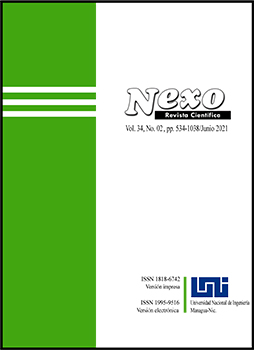Assessment of organic matter temporal dynamics in the klyazma basin using remote sensing and qgis trends.earth
DOI:
https://doi.org/10.5377/nexo.v34i02.11624Keywords:
Productivity dynamics, Biological process, River basin, Biological property, Irrational using, Remote SensingAbstract
The article addresses the dynamics of biological processes in various landscapes within a holistic natural geosystem—a catchment area. The Klyazma river (the fourth order tributary to the Volga) was selected as the object of study. The natural complex of the Klyazma river basin is a combination of different landscapes, each marked by a diverse composition of geomorphological and soil-vegetation structures. The study is based on remote sensing data and the Trends.Earth Land Degradation Monitoring Project (Land Cover Dataset, European Space Agency 2015, 300 m spatial resolution) implemented using the open-source Quantum GIS 2.18. Four landscape provinces and eight site were identified in the studied catchment area according to the geomorphological structure and the soil and vegetation cover. The ecosystem parameters Gross Primary Productivity, Net Primary Productivity, and Ecosystem Respiration were measured in the identified sites. In different landscapes the biological processes, characterizing the organic matter dynamics in the form of plant production and organic matter accumulation, differ in both rate and intensity, and variously respond to the changes in climate parameters and land use. The river basin, as a holistic ecosystem, showed sufficient stability of the dynamic processes. This suggests that holistic natural ecosystems, such as catchment areas, have internal compensatory mechanisms that maintain the development stability over long period of time, while irrational land use remains the main damaging factor.
Downloads
2167
Downloads
Published
How to Cite
Issue
Section
License
The authors who publish in Nexo Scientific Journal agree to the following terms:
- Authors retain the copyright and grant the journal the right of the first publication under the license Creative Commons Attribution License, which allows others to share the work with a recognition of the authorship of the work and the initial publication in Nexo Scientific Journal.
- Authors may separately establish additional agreements for the non-exclusive distribution of the version of the work published in the journal (for example, in an institutional repository or a book), with the recognition of the initial publication in Nexo Scientific Journal.
- Authors are allowed and encouraged to disseminate their works electronically (for example, in institutional repositories or in their own website) before and during the submission process, as it can lead to productive exchanges, as well as earlier and greater citation of published works.










